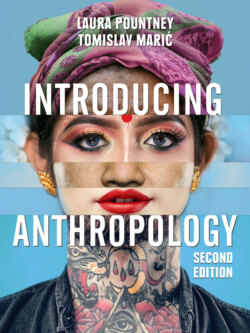Читать книгу Introducing Anthropology - Laura Pountney - Страница 78
Gangsters without Borders: An Ethnography of a Salvadoran Street Gang (Ward 2012)
ОглавлениеThomas Ward spent eight and a half years of participant observation fieldwork in Los Angeles (see Chapter 11). His is one of the rare ethnographies to explore the issues of globalization and street gangs and how gang culture has spread from the streets of Los Angeles to El Salvador and other parts of Central America. Ward spent the better part of sixteen years inside what is considered to be one of the world’s largest gangs, the Mara Salvatrucha (MS-13). He drank with gang members at parties, celebrated the birthdays of hard-core members, and met their children and parents. He visited them in hospitals after they had been shot or stabbed, and in prison after they were convicted. He also attended their funerals. During the course of his fieldwork, Ward became close to a dozen hard-core gangsters as he interviewed more than 150 gang members from eight different cliques – in Los Angeles, California state prisons, Salvadorean prisons, and the homes of retired members in El Salvador. He provides an insight into the world of street gangs and their spread throughout Central America and the USA.
According to Ward, his goal was to understand the motives behind the Salvadorean immigrants’ behaviour and to document the complexity of gangsters’ lives. He began his research in 1993 by meeting with five active members of the gang in Los Angeles. Two of these subsequently died as a result of gang violence, one recovered from crack addiction, another is serving life in prison, and the last one is free and has survived to old age. Those first connections led Ward into the hard, fast life of gangsters. Over the years, he had many open conversations with gang members, from the time of their initiations until long after, when they were thinking about leaving the gang. He discovered that they were often allowed to retire after a few years of service with the gang and move on to a full-time job and family responsibilities. While Ward was invited to sell drugs, commit robberies, participate in drive-by shootings and even become an honorary member of the gang, he always declined to participate in illegal activities. Before immersing himself in the street gang subculture, he had spent fourteen years researching the Salvadorean immigrant community and homeless people living on skid row in downtown Los Angeles.
Ward first started working with the Salvadorean community in 1981 while volunteering with a social service agency that provided food, shelter and legal services for Central American refugees fleeing their war-ravaged country. The experience would prove valuable: he learnt about Salvadorean history and culture, including their slang, which helped him earn trust among the MS-13 members. But this background provided only minimal protection when Ward had a gun put to his head and a knife held against his throat, with the warning that he would be killed if he was an undercover policeman. The gang members did not take Ward’s word for it – they did a background investigation by calling his employer and checking out his references in Los Angeles. Despite the death threats, Ward saw a human side to these MS-13 members – people who had lived difficult lives and were searching for something better. In their own way, they were looking for family security, status and self-respect.
